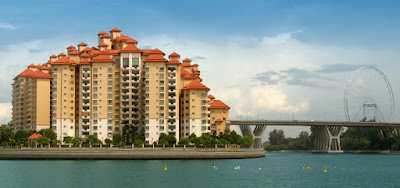Most of us would have a POSB or DBS account which we will be able to earn cash back from now onward. I just received this information from DBS which I found it quite useful for most of us.
With “POSB Cashback Bonus”, we need only to fulfil three or more types of regular banking transactions to enjoy cashback rewards,
without the need to make additional deposits.
We can earn up to SGD 130 per month via salary crediting, credit card spending, home loan instalments, insurance premiums, or investments.
POSB LAUNCHES INNOVATIVE “BANK AND EARN” PROGRAMME
FIRST BANK IN SINGAPORE TO REWARD CUSTOMERS WITH MONTHLY CASHBACK
FOR REGULAR BANKING TRANSACTIONS
***
POSB today announced the launch of an innovative “bank and earn” programme which will reward customers with cashback every month through regular banking transactions. This programme is also the first-of-its-kind in Singapore which allows customers to earn straight cashback rewards without making additional funds deposits on their account balances.
The “POSB Cashback Bonus” programme is the first of its kind in Singapore to offer customers direct monthly cashback simply by fulfilling at least three types of regular banking transactions. This is a simple programme for customers to earn cashback as the majority of POSB/DBS customers are already conducting these transactions with the bank. For example, customers will only need to conduct at least three of the following transactions every month to earn up to SGD 130 per month in cashback rewards:
1. Credit their monthly salary (Minimum amount of SGD 2,500; cashback of 0.3%; monthly cashback cap of SGD 20)
2. Spend on their POSB/DBS credit cards (No minimum amount required; cashback of 0.3%; monthly cashback cap of SGD 20)
3. Pay their monthly home loan instalments (No minimum amount required; cashback of 3%; monthly cashback cap of SGD 30)
4. Pay their POSB/DBS insurance premiums (No minimum amount required; cashback of 3%; monthly cashback cap of SGD 30; insurance products should be purchased after signing up for the programme)
5. Invest through POSB/DBS (No minimum amount required; cashback of 3%; monthly cashback cap of SGD 30; investment products should be purchased after signing up for the programme)
See below for two examples of how we can earn generous cashback rewards from regular banking transactions:
Scenario A: Early-Career Individual (monthly transactions)Salary Credit: SGD 2,500 (Cashback of SGD 7.50)
Credit Card Spend: SGD 500 (Cashback of SGD 1.50)
Home Loan Instalments: SGD 800 (Cashback of SGD 24)
Insurance: SGD 350 (Cashback of SGD 10.50)
Investments: SGD 200 (Cashback of SGD 6)
Total cashback: SGD 49.50 monthly and SGD 594 yearlyScenario B: Mid-Career Individual (monthly transactions) Salary Credit: SGD 5,000 (Cashback of SGD 15)
Credit Card Spend: SGD 1,000 (SGD 3)
Home Loan Instalments: SGD 1,000 (Cashback of SG30)
Insurance: SGD 500 (Cashback of SGD 15)
Investments: SGD 1,000 (Cashback SGD 30)
Total cashback: SGD 93 monthly and SGD 1,116 yearlyEarlier this year, POSB conducted a survey among some 800 customers on their reward preferences based on their banking relationships. The majority of customers responded that they prefer the following features for their banking accounts:
· Rewards structure that is straightforward and simple to understand
· Cashback rewards which are credited to their accounts regularly
· Rewarded based on their multiple relationships and transactions done with the bank
· No requirement to make additional deposits to earn rewards
Said Jeremy Soo, Head of Consumer Banking Group Singapore, DBS Bank, “We are delighted to introduce this programme that rewards our customers based on their banking relationships with us. Currently, most of our customers are already conducting regular banking transactions with us and this means that customers can simply enjoy monthly cashbacks with ‘POSB Cashback Bonus’ without doing a lot more. As the ‘People’s Bank’, we are committed to offering our customers greater value through innovative products and services, and to providing superior deals for them to enjoy.”
To enroll in the “POSB Cashback Bonus” programme, simply log on to POSB/DBS iBanking to register, and nominate a deposit or credit card account to receive your monthly cashback. Visit
www.posb.com.sg/cashbackbonus for more information on the programme.
In 2013, the bank launched the DBS Multiplier Programme to reward emerging affluent customers for consolidating their finances with DBS. With DBS Multiplier, which was recently enhanced in August 2016, customers are able to enjoy a higher interest of up to 2.68% p.a. on their account balances by fulfilling any three of the five transaction categories. The programme has been a hit with customers and the bank has now more than 90,000 accounts. For more information on the “DBS Multiplier Programme”, please visit
www.dbs.com.sg/personal/landing/dbs-multiplier/.
*This is NOT a sponsored post














